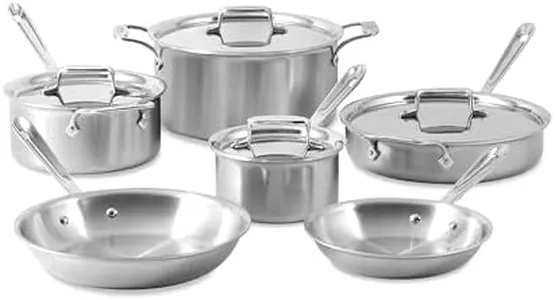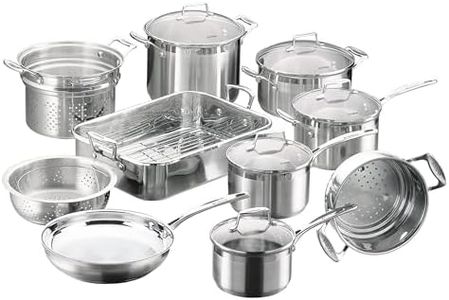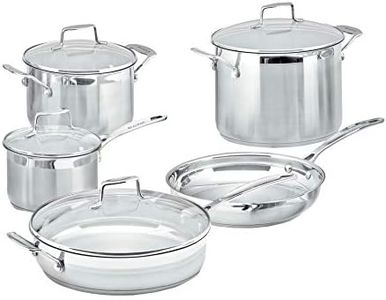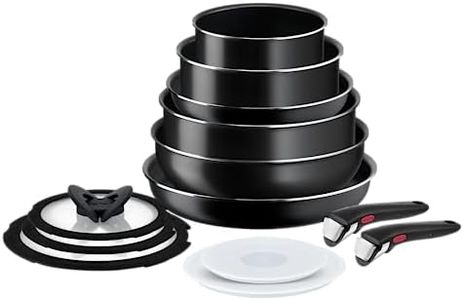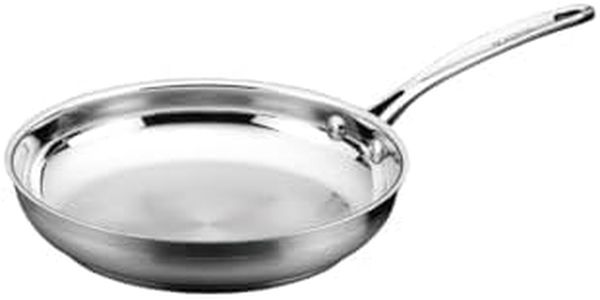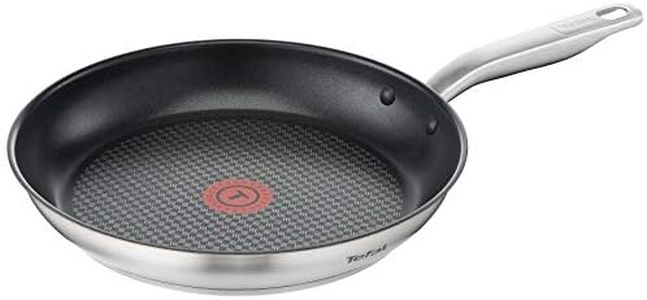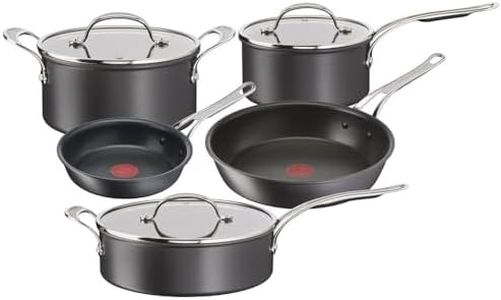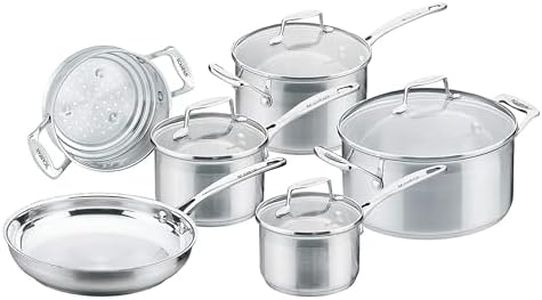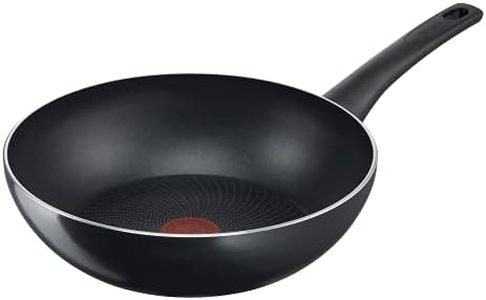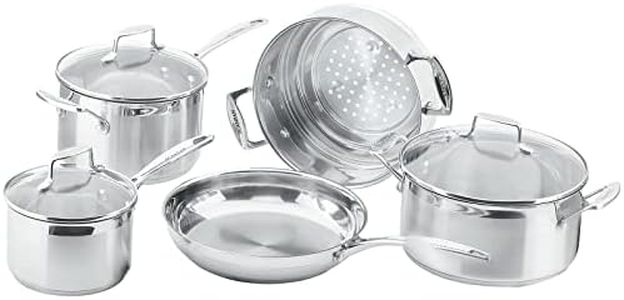We Use CookiesWe use cookies to enhance the security, performance,
functionality and for analytical and promotional activities. By continuing to browse this site you
are agreeing to our privacy policy
10 Best Lightweight Cookware
From leading brands and best sellers available on the web.Buying Guide for the Best Lightweight Cookware
Choosing the right lightweight cookware can make cooking, traveling, or camping much easier and more enjoyable. The goal is to find pots, pans, or sets that are easy to carry or move around, without sacrificing too much on performance or durability. When picking cookware, focus on the materials, size, design, and cleaning needs so you'll have pieces that match where and how you plan to cook.MaterialThe material of the cookware is essential because it affects the weight, heat conduction, durability, and maintenance requirements. Common lightweight materials include aluminum, titanium, and some stainless steel alloys. Aluminum is very light and affordable but sometimes less durable and can react with acidic foods if not coated. Titanium is extremely light and strong but usually more costly and heats unevenly. Stainless steel is more robust and non-reactive, but can be heavier unless it's a thin gauge or combined with aluminum. Think about where you'll use the cookware—if it's for backpacking or travel, prioritize titanium or coated aluminum for the lightest weight. For home use, durability may be a higher priority, making stainless steel suitable.
Size and CapacitySize and capacity refer to the dimensions and the amount of food the cookware can hold. These are important because choosing the right size ensures you can prepare meals for yourself or your group without carrying unnecessary weight. Small pots and pans (up to 1 liter or 8 inches) are ideal for solo or two-person outings, while medium (1-2 liters or 8-10 inches) are good for small families. Larger capacities suit group cooking but add more heft. Consider the number of people you usually cook for and choose a size that fits your needs while remaining easy to transport.
Non-Stick CoatingA non-stick coating prevents food from sticking to the surface, making cooking and cleaning much easier. This is particularly valuable in lightweight cookware because it often sees use in less-equipped kitchens, outdoors, or campsites. Non-stick coatings can wear over time and require gentle utensils, while uncoated cookware can last longer but might demand more oil and scrubbing. If you value quick clean-up and plan to cook foods prone to sticking (like eggs or pancakes), opt for cookware with a quality non-stick coating.
Handle Design and ConstructionHandles influence how easy and safe it is to use cookware, especially when it's filled and hot. Lightweight cookware often features folding, detachable, or hollow handles to reduce weight and packing size. However, some very lightweight handles can get hot or feel flimsy. If space and portability are top priorities, go with foldable or removable handles but make sure they lock securely. For home use or if you cook heavy dishes, sturdier handles are worth any extra weight.
Ease of CleaningHow simple it is to clean your cookware impacts how enjoyable it is to use. Lightweight options with smooth surfaces or non-stick coatings clean up fastest, while textured or uncoated metals might take more effort. Consider your typical cooking environment: for camping or travel, easy-clean options are much more convenient, especially when water is scarce. For home use, there is more flexibility, but no one likes difficult cleanup chores.
Stackability and NestingThis spec refers to how well your cookware stacks or nests within itself or with other kitchen items. It's important for saving space, especially for campers, travelers, or those with small kitchens. Look for sets where the pieces fit together tightly with minimal wasted space, including handles that fold or detach for compact storage. If you need to save on storage, pick cookware designed for nesting to fit everything into your bag or cupboard efficiently.
